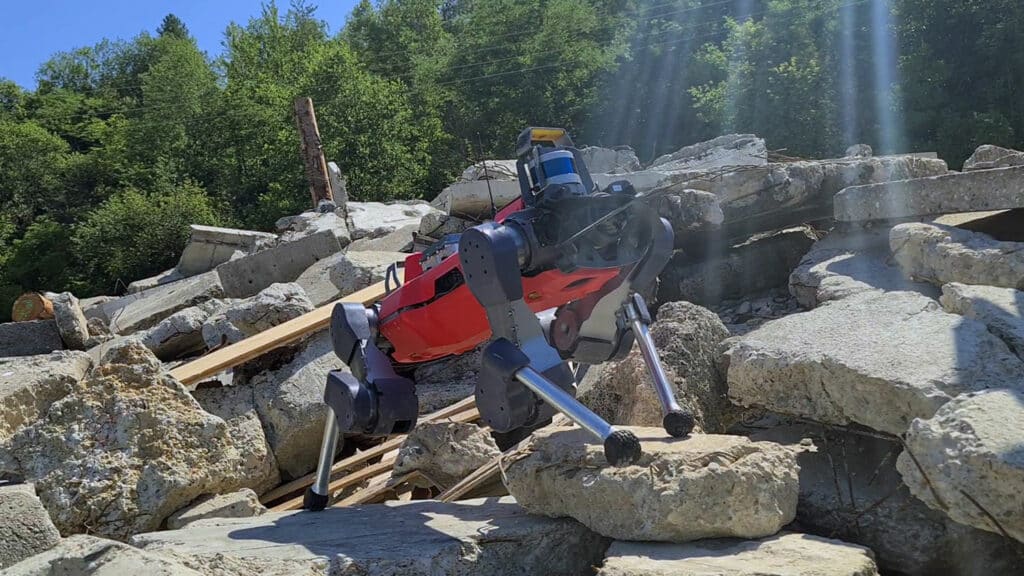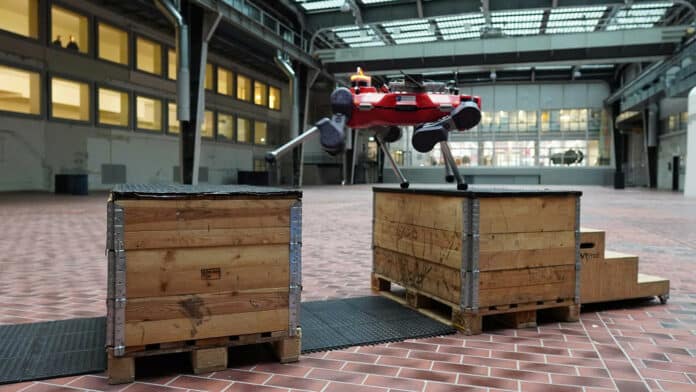ANYmal has for some time had no problem coping with the stony terrain of Swiss hiking trails. Now, researchers at ETH Zurich are working on teaching this quadrupedal robot some parkour moves that require a lot of athletic ability to smoothly negotiate obstacles in an urban environment. ANYmal is also becoming proficient at navigating through tricky terrain found on building sites or in disaster areas. Researchers managed to teach it all these new skills.
Apparently, two teams from the group led by ETH Professor Marco Hutter of the Department of Mechanical and Process Engineering took different approaches to achieve this.
“Before the project started, several of my research colleagues thought that legged robots had already reached the limits of their development potential, but I had a different opinion. In fact, I was sure that a lot more could be done with the mechanics of legged robots,” said ETH doctoral student Nikita Rudin, who does parkour in his free time.
Despite some of his colleagues thinking that legged robots had reached their development potential, Rudin believed that more could be done. His parkour experience inspired him to push the boundaries of what the quadrupedal robot ANYmal could do. He taught the robot new skills through machine learning, like scaling obstacles and performing dynamic maneuvers to jump back down from them.

ANYmal is programmed to learn like a child would, through trial and error. Whenever the robot encounters an obstacle, it uses its camera and artificial neural network to identify what kind of impediment it is dealing with. It then performs movements based on the training it received earlier, which are likely to succeed in overcoming the obstacle.
According to Rudin, there is still plenty of room for improvement. Some of the potential improvements include enabling the robot to navigate through challenging terrain like rubble-strewn disaster areas rather than just solving predefined problems.
The goal of the other project, conducted by Rudin’s colleague and fellow ETH doctoral student Fabian Jenelten, was to prepare ANYmal for a specific application. Jenelten combined machine learning with a model-based control approach used in control engineering to achieve this goal. The model-based control approach helped teach the robot accurate maneuvers, such as recognizing and navigating gaps and recesses in piles of rubble.
On the other hand, machine learning helped the robot master movement patterns that it could apply flexibly in unexpected situations. Jenelten believes that combining both approaches allowed them to make the most out of ANYmal.
As a result, the quadrupedal robot has improved its ability to maintain balance and stability on slippery surfaces or unstable terrain. Its advanced capabilities make it an ideal candidate for deployment in dangerous environments, such as disaster areas or building sites. With this technology, it could be possible to inspect collapsed houses or other hazardous locations without risking human lives.
